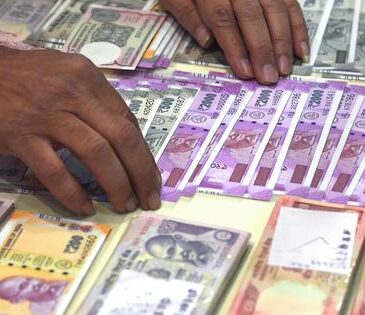
Are foreign currency accounts making a comeback?
These types of accounts, which allow customers to hold deposits in currencies from other countries, have been around for decades, but banking execs say a wave of geopolitical reorientation is prompting increased interest in them. Some CFOs and other businesses see them as a way to hedge against currency fluctuations and quickly changing trade agreements.
Tarek El-Yafi, head of U.S. Bank’s global transaction services division, said in an interview that his company has been “investing heavily in the last year to add a lot of capabilities to foreign currency accounts.”
Today, U.S. Bank has “well over 1,000” such accounts, he said, though he declined to share the specific number. Though several American banks offer foreign currency accounts, including Citi, Cathay Bank and others, El-Yafi said that U.S. Bank maintains a notable distinction over others: foreign currency accounts based in the United States. These accounts still operate with a foreign currency of choice – yen, pounds or others – but they’re operated inside the U.S.
That’s been an attractive selling point for businesses, he said, because it means that customers can open up new accounts more quickly than they could in many foreign markets.
“The secret sauce in our foreign currency accounts is they follow the U.S. regulatory process,” El-Yafi said. “It is a hell of a lot faster to open up those accounts in the United States because it just looks, acts and feels like a dollar account, but it’s just a different currency.”
Dave Vang, finance professor at the University of St. Thomas, noted that foreign currency accounts have become increasingly popular due to ongoing globalization over the last few decades. In the past, though, it was primarily businesses based in countries outside the United States opening foreign currency accounts here. That appears to be flipping now.
“Back in the ‘80s, for people in other countries who used to do a lot of business in the United States, it was a common practice to have two accounts: one in their home country currency and then another in U.S. dollars,” Vang said. “It kind of reduced some of the currency risk and also made it easier if they’re getting payments.”
U.S. Bank’s El-Yafi again pointed to geopolitical uncertainty as the reason American companies are seeking out foreign currency accounts. “Take a look at what’s happening in the news,” he said. “We don’t know what’s going to happen tomorrow. The level of anxiety around doing business internationally is probably at an all-time high, triggered by tariffs but there are a lot of other reasons why.”
El-Yafi noted that U.S. Bank’s foreign currency accounts, like the company’s other offerings, are insured by FDIC “up to regulatory limits.”
“The liquidity stays in the U.S.,” he said. That’s been appealing to middle-market businesses and bigger firms, he added.
Vang said that the FDIC assurance is a “new wrinkle” in the long history of foreign currency accounts. Still, there could be other potential risks with foreign currency accounts, including fluctuations in non-dollar currencies.
For his part, El-Yafi emphasized that any business considering these accounts would need to start out by consulting their tax and legal teams.
“From our lens, we’re seeing clients do this,” he said. “They are getting comfortable.”




